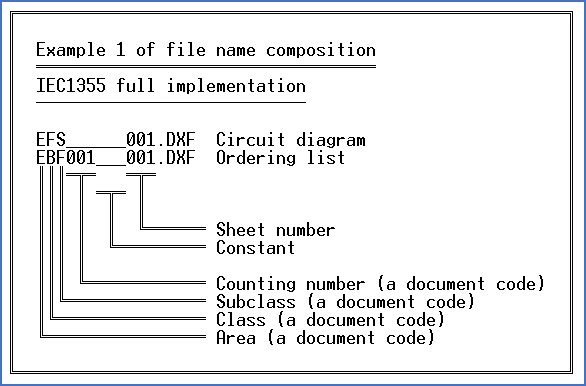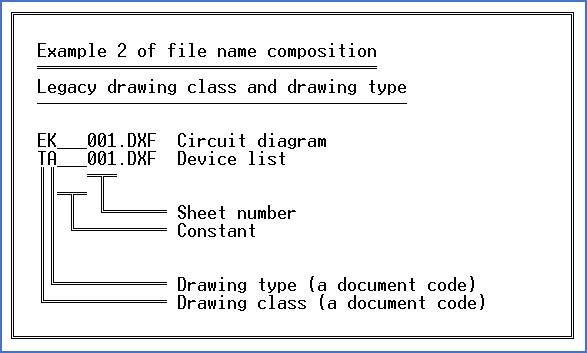|
<< Click to Display Table of Contents >> Examples and explanations |
  
|
|
<< Click to Display Table of Contents >> Examples and explanations |
  
|
One example of the use of document codes is from the Sample IEC1355 English demonstration project, which is included at delivery of cadett ELSA. That project contains four drawing sheets, with two different set of document codes (EFS and ETL). Please refer to the table below.
File name |
Area (first character) |
Class (second character) |
Subclass (third character) |
|---|---|---|---|
EFS______001.DXF |
E = Electrical engineering |
F = Function describing documents |
S = Circuitry documents |
EFS______002.DXF |
E = Electrical engineering |
F = Function describing documents |
S = Circuitry documents |
EFS______003.DXF |
E = Electrical engineering |
F = Function describing documents |
S = Circuitry documents |
ETL______001.DXF |
E = Electrical engineering |
T = Geometrical form describing documents |
L = Arrangement documents |
In the example above, the first three characters define document codes for area, class and subclass. The following three characters define a so-called "counting number", but for the four sheets in the table, that document code is undefined and therefore specified with three underscores ("___"). After those, you will find three additional underscores, which are constants. The final three characters specify the sheet number.
The file name composition, which is part of the project parameters, is described in detail in a sub-topic of the Project Module topic, which is called File name composition.
The figure below explains the example above.

Figure 577: Example 1 of file name composition (IEC1355 full implementation)
In the figure below, a second example is explained. It deals with legacy drawing classes and drawing types that was used in old cadett ELSA versions and which are still in wide-spread use.

Figure 577: Example 2 of file name composition (legacy)